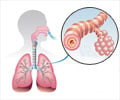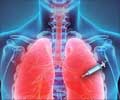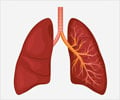Diagnosis of Pneumoconiosis
History
- A history from the patient regarding exposure to certain dust particles helps to diagnose the condition. It is also important to know about the ventilation of the workplace, the availability of protection and if other workers suffer from similar conditions. History of past exposure should also be obtained since some complications like cancer may develop many years after exposure.
Physical examination
- A doctor should examine the patient to determine the severity of lung disease.
Lung function tests
- In these tests, the patient is asked to breathe forcefully out into an instrument. This test assesses the severity of the lung condition and measures the lung capacity by various parameters.
Radiological tests
- X-rays and CT scan help in diagnosing the type of pneumoconiosis and the severity of disease. For example, small, round opaque areas in the lung x-ray are usually seen in silicosis and coal workers pneumoconiosis, whereas small linear opacities are seen in asbestosis. In asbestosis the pleura may show opacities and fluid in the pleural spaces. In silicosis, lymph nodes may show an eggshell appearance.
Bronchoscopy
- In this test, a tube is inserted into the bronchi to obtain some secretions that may be tested for the type of particles. This procedure is called bronchoalveolar lavage. A lung biopsy may also be obtained to determine the type of lung disease.
Other tests
- Other tests like urine test, allergy testing may also be helpful to diagnose the condition.
















